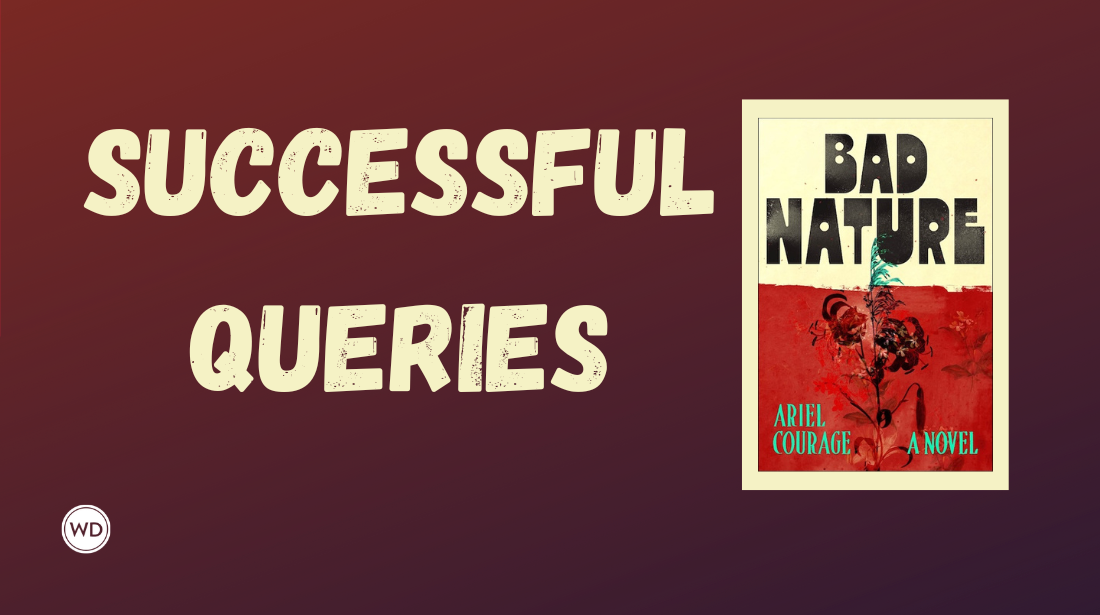6 Steps to Writing Companion Pieces To Reach New Audiences for Your Forthcoming Book
Companion pieces aren’t only meant to serve as promotion for your upcoming book—they also offer you a chance to break apart the different themes of your work to attract a larger audience. Here, author Aileen Weintraub shares 6 steps to writing companion pieces to reach new audiences for your upcoming book.
As soon as I signed the contract for my book Knocked Down: A High-Risk Memoir, I began thinking about the types of companion pieces I wanted to write to help generate buzz and build my platform. Not only was it fun, but I got paid by each publication for the pieces I wrote.
So, you may be wondering, “What exactly is a companion piece, anyway?”
A companion piece is an essay, article, op-ed, or short story using the themes in your book to situate yourself as an expert in your field if you write nonfiction, and it allows people to learn about your style and your genre if you write fiction, both which help you reach a wider audience. An excerpt of your book is also considered a companion piece. These can all be used to help you promote your book, whether it is a novel, a memoir, self-help, or other nonfiction.
Follow these six steps to write buzz-worthy companion pieces.
Step 1: Find your themes.
Most books have one overarching theme, but if you take a closer look at your work, you will find there are likely multiple angles and underlying themes you can mine and develop into companion pieces. For example, Knocked Down is about my high-risk pregnancy and how I spent five months on bed rest. Many of my companion pieces focused on both bed rest and high-risk pregnancy. However, my book is also about marriage, motherhood, religion, reproductive health, living in a rickety old farmhouse, grief, death, anxiety, and money. This is because my high-risk pregnancy affected all these other aspects of my life.
Once I began looking at my book with this in mind, I found so many additional writing opportunities to explore. I wrote a financial piece for Business Insider about how being on bed rest affected my income, an essay about living on an old farm for Modern Farmer, an op-ed about the way we talk about women’s health care for NBC Think, and so many more. You can check out my website at aileenweintraub.com to see all of the pieces I published by pulling apart Knocked Down theme by theme.
Step 2: Be clear about the type of content you plan to pitch to editors.
It’s important to know exactly what you want to say and how you are going to say it. Let’s break it down (I’ve included hyperlinks to some of the different types of companion pieces I’ve written so you can see how they differ):
- An op-ed is an opinion letter or a call to action.
- An essay is a first person account of an event or personal experience.
- A reported piece includes statistics, facts, and quotes from reliable sources.
- A craft piece focuses on the writing process and what you have learned along the way.
- An excerpt is a short, often adapted chapter or part of your forthcoming book.
- A short story is a fictional story in your genre that can be similar in style to your book. (Since I’m a nonfiction writer, I don’t have a personal example for this one, but it is pretty straight forward.)
Once you decide on a theme and the type of piece you are writing, research publications that will be a good fit for your content.
Step 3: Find your audience.
My main audience for Knocked Down included parents, and even more specifically, mothers. This meant that I focused my companion pieces on publications that catered mostly to women. I started with the obvious, reaching out to publications about pregnancy and early motherhood. From there, I expanded my reach by pitching publications that focused on broader women’s issues.
I even wrote an op-ed for Oldster, whose target audience is middle-aged women and older. In my piece, I wrote about how women, no matter their age, need to be taken seriously by the healthcare community. Pitching to what may seem like an unlikely publication for your content means digging for angles that might not be so obvious at first glance.
Step 4: Write a concise pitch letter.
Editors are going to give your pitch letter about 10 seconds of their time, so make it count. Grab them from the first line with a compelling hook about your topic. Then write a four-to-six line summary briefly but clearly stating your idea. Finally, close with your bio and links to any relevant works.
Writing a winning pitch letter is an art form and takes time to perfect. If you’re new to pitching, do online research to find examples and ask fellow writers to swap pitches for critique. For fiction, look at the submission guidelines and write a short but compelling cover letter.
Step 5: Give yourself enough time.
Ideally, the best time for a companion piece to come out is in the weeks leading up to your book release and immediately afterward. This will help create book buzz, but it can get tricky based on when your pitch is accepted, edits required, and the schedule of the publication you’ve submitted to.
It often takes time to land a pitch, so make sure you begin this process a few months before your book is released. You may have to pitch multiple editors before you get a yes. Unless your topic is timely, it is usually not a good idea to pitch the same piece to more than one outlet at a time. If you don’t hear back after seven days, you can send a follow up email asking if the editor is interested. If you don’t hear back a few days after that, it is safe to move on.
Oftentimes, editors will not respond unless they are interested. As writers, this is incredibly frustrating, but it helps to remember that editors are busy with the writers and pieces they have already commissioned.
Step 6: Write your (hopefully viral) piece.
When writing your companion piece, keep the topic of your book in mind and find tie-ins. If it seems natural, mention your book in the piece and include a hyperlink. Make sure it’s not a shameless plug, but actually adds to the overall integrity of what you are writing. Every writer hopes their piece will go viral and lead to endless book sales; however, the chances are slim. Even still, it’s a good idea to study other viral pieces to see what elements they include.
Often, a viral piece taps into an idea that many people have been feeling but have yet to be able to put words too. My Huff Post piece This Is What No One Tells Women About What Happens to Your Body in Your Forties went viral because it acknowledges the effects of perimenopause, which most women face but so few people are willing to talk about.
At the end of your companion piece, always include your bio with a hyperlink to your book, so people can easily purchase it while your words are fresh in their minds.
Writing a companion piece is one of the best ways to get word out about your book, expand your audience, and position yourself as an expert no matter the subject you are writing about.
Aileen Weintraub is the author of Knocked Down: A High-Risk Memoir about marriage, motherhood and the risks we take. She is also a Pitch Witch working with writers to develop their query letters, pitches, book proposals, articles, and essays at witchesofpitches.com








